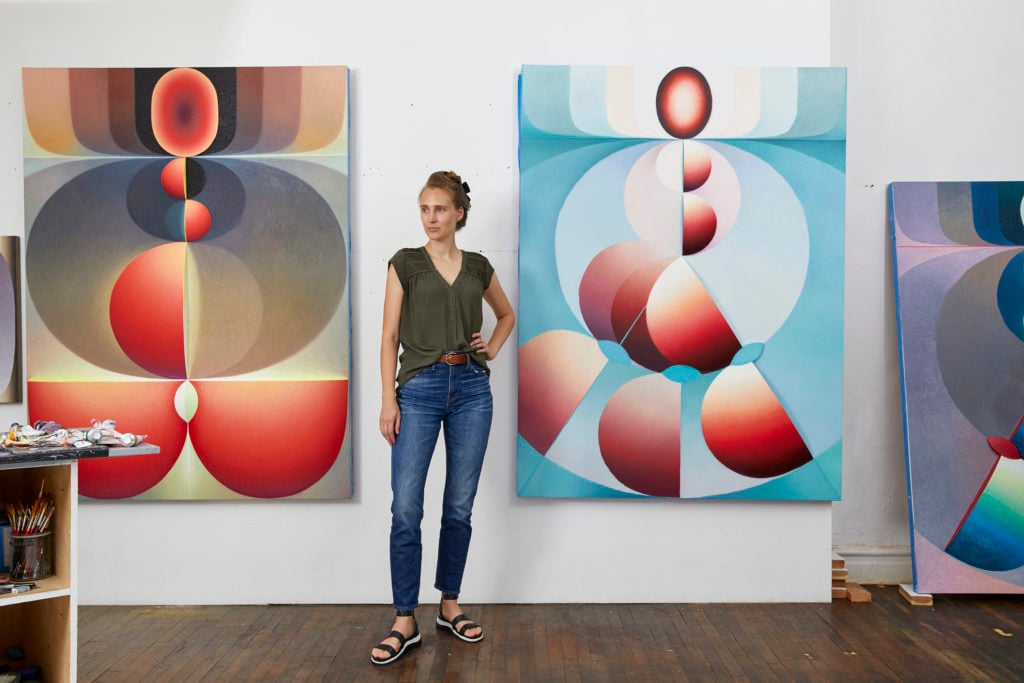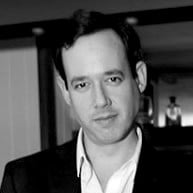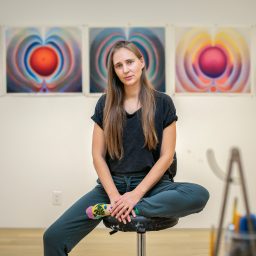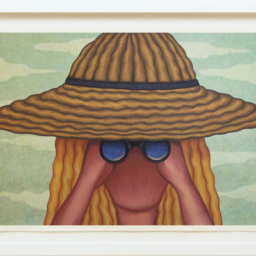In October 2016, Loie Hollowell had her first solo show at Feuer Mesler, a gallery on the Lower East Side. The paintings were intriguingly untrendy. In contrast to the brawny figurative painting and dystopian installation art in vogue at the time, Hollowell painted voluptuously abstracted female bodies in bright-colored geometric shapes, awash in psychedelic glow, nodding to the obscured sex organs in the flowers of Georgia O’Keeffe.
After the opening, a celebratory dinner was held at a Mexican restaurant on Orchard Street, and spirits were high, with her father giving an extended toast to the beginning of his daughter’s career. It was already off to an auspicious, if somewhat modest, start: The gallery had sold several works in the show, some for $8,000, and larger ones for $15,000.
Those prices have since increased more than 1,200 percent, and Loie Hollowell has become one of the most fiercely sought-after artists in New York. Smaller works are now commanding $200,000 at auction. Art advisors told me that, in private transactions on the secondary market, paintings are being offered for almost $300,000.
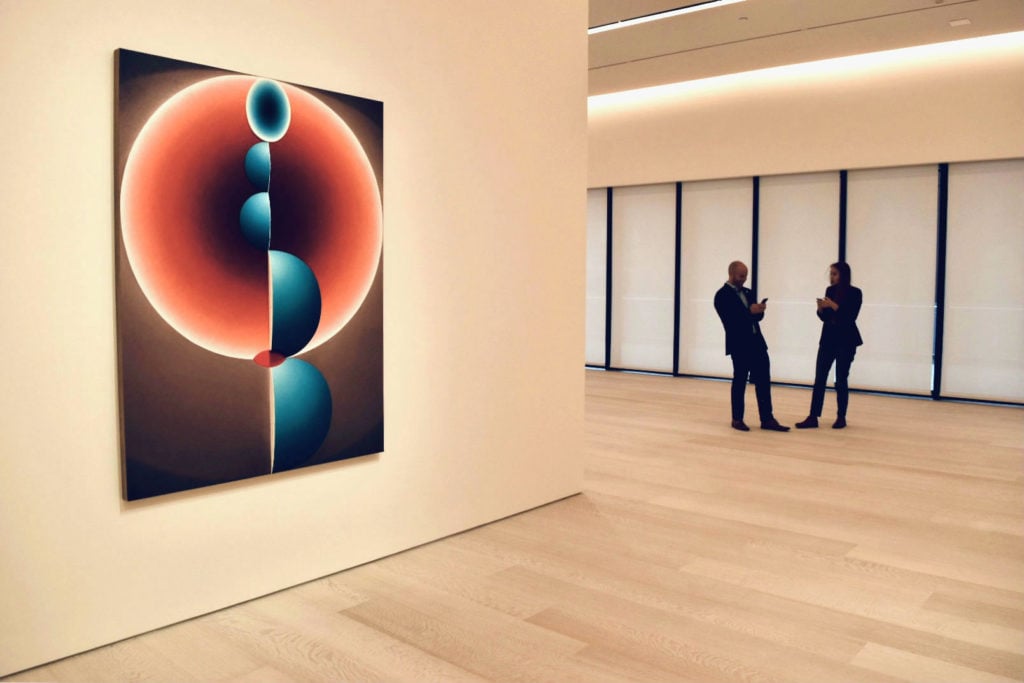
The Loie Hollowell show at the new Pace gallery.
On Saturday, Hollowell had her most high-profile outing yet. She opened “Plumb Line,” her first New York exhibition with the global juggernaut Pace, as part of a slate of shows inaugurating the gallery’s new 75,000-square-foot, eight-story building in Chelsea. All around the neighborhood, there are signs that list the name Loie Hollowell right between such titans of Pace’s roster as David Hockney and Alexander Calder.
“I feel so honored to be in the company of these people,” Hollowell, who is just 36, told artnet News last week, a few days before the public opening. “It’s exciting that Hockney’s still alive and there might be a chance of meeting him. I mean, he’s like a god among painters.”
She could have been a bit wiped from the hours of early previews that morning, but still seemed endlessly peppy as she showed off her latest nine paintings, which chronicle her recent pregnancy and the birth of her child. Even with canonical Calders downstairs and buzzed-about new Hockney drawings a few floors up, Hollowell’s show stays with you when you leave the steel-and-glass Pace citadel. She’s left behind art-historical references in favor of her now fully developed sex-forward idiom, making a leap to six-foot-tall canvases, her biggest ever. Each one pops off the white walls, the groovy constellations on canvas enhanced by round, foam sculptural implements that protrude from the surface like balls floating in water. All were sold well before the opening and the waiting list for the work is quite long. Each painting cost $100,000, netting Hollowell a cool $450,000 after the gallery’s 50 percent commission.
But while she gushed about the new space and her inclusion in Pace’s storied roster, she was feeling a twinge of anxiety about the new attention she’d get from the exposure, and how it would affect her already skyrocketing auction prices. As any in-demand young artist knows, secondary market sales that jump too high, too fast often tempt other collectors to sell, potentially flooding the market and overexposing the artist before she’s gotten the chance to develop a solid foundation for her work.
“I almost never talk about money but, well, the market determines that,” she said. “These stupid auctions, it totally fucks with your price.”
“Just Trust Me.”
After graduating from Virginia Commonwealth University in 2012, Minnesota-born Hollowell moved to New York and showed at small galleries like one in Ridgewood, Queens, where she presented paintings of unabashedly erotic flora that one local blog described as “labial cacti.” A chance encounter with the painter Ridley Howard, who was an artist in residence at VCU while Hollowell was there, led to a show at Howard’s project space, 106 Green, in Greenpoint, Brooklyn, in the fall of 2015.
Among those who bought work from the show was Joel Mesler, a dealer who months earlier had teamed up with Zach Feuer to open a two-space gallery on the Lower East Side. He paid $2,400 for each. After visiting her studio, Mesler offered Hollowell representation, and brought her work to NADA Miami Beach in December 2015.
“As soon as I went to the studio, I knew she was one of them—it’s like, once every two years, you find that artist,” Mesler told artnet News. “The historical references are there, they’re sexy, they’re colorful, they have great wall power.”
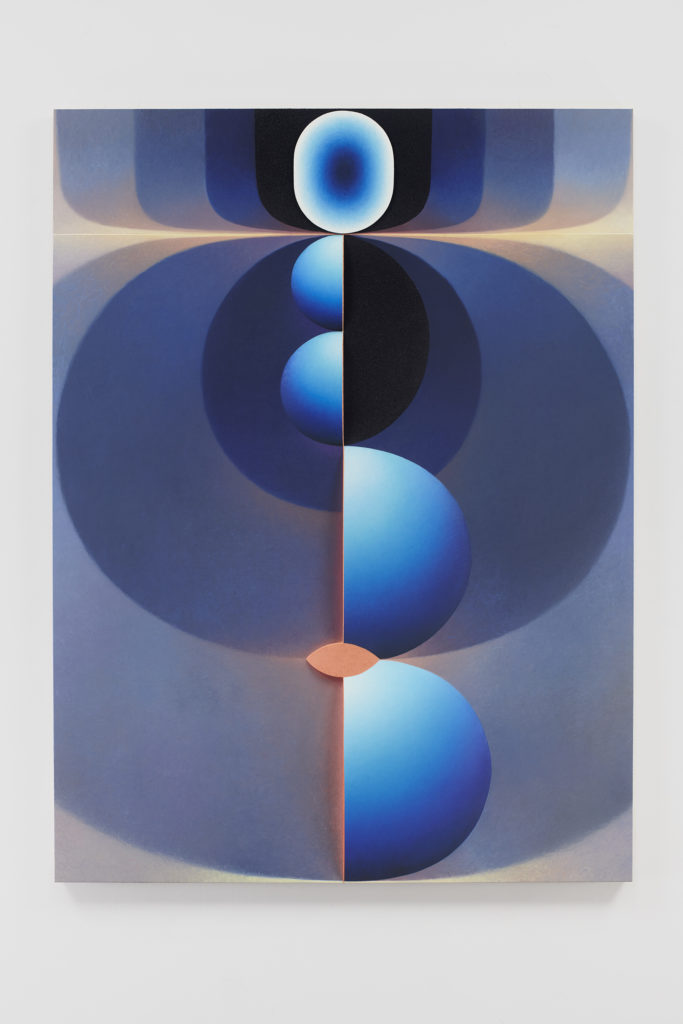
Loie Hollowell, Standing in Blue (2018). © Loie Hollowell, courtesy Pace Gallery
But in the run up to the show at Feuer Mesler, advisors who were approached to buy on behalf of clients were skeptical. Some, speaking on background, said the O’Keeffe connection was too obvious, and that, at 33, Hollowell was too young to take a bet on. “He had to, kind of, convince me,” one advisor who is still very active in the artist’s market told me. Mesler admitted many sales took a bit of elbow grease to finalize.
“Everyone who I sold work to, I was like, ‘Just trust me,’” he said. “Even the ones who weren’t in 100 percent, I said, ‘Just trust me.’”
One early admirer was Fairfax Dorn, the scion of a big Texas philanthropist family and the founder of Ballroom Marfa, an art center that has helped transform the tiny desert town into a global destination on the art hajj. Dorn worked with Mesler to secure loans of Hollowell’s work for a group show at Ballroom Marfa in 2016, and by the time Hollowell opened her first show with the New York gallery that fall, many of the buyers included not just Mesler’s bread-and-butter crew, but the powerful Lone Star State machers who back the Marfa machine.
“The foie gras collectors came running,” Mesler said. “It was like a different tier of collectors started reaching out about available work. I pretty much knew that she was jumping ship.”
Indeed, Hollowell at the time was just a year removed from her first solo show at a small neighborhood project space, but she was about to head to a mega-gallery. Dorn is married to Pace president Marc Glimcher, who was in Marfa to see the show and found her work to be simpatico to that of Pace artists like Agnes Martin, whose work also embodies the aesthetic of the Southwest, and Elizabeth Murray, who, like Hollowell, plays riotously with color and form.
And after Hollowell’s show at Feuer Mesler ended in December 2016, Glimcher offered her representation with his global stable of galleries that stretches across three continents. In a press release announcing the move sent not a month after the Feuer Mesler show closed, Glimcher said, “She is truly a rare talent. Despite her age, the importance of her work is evident.”
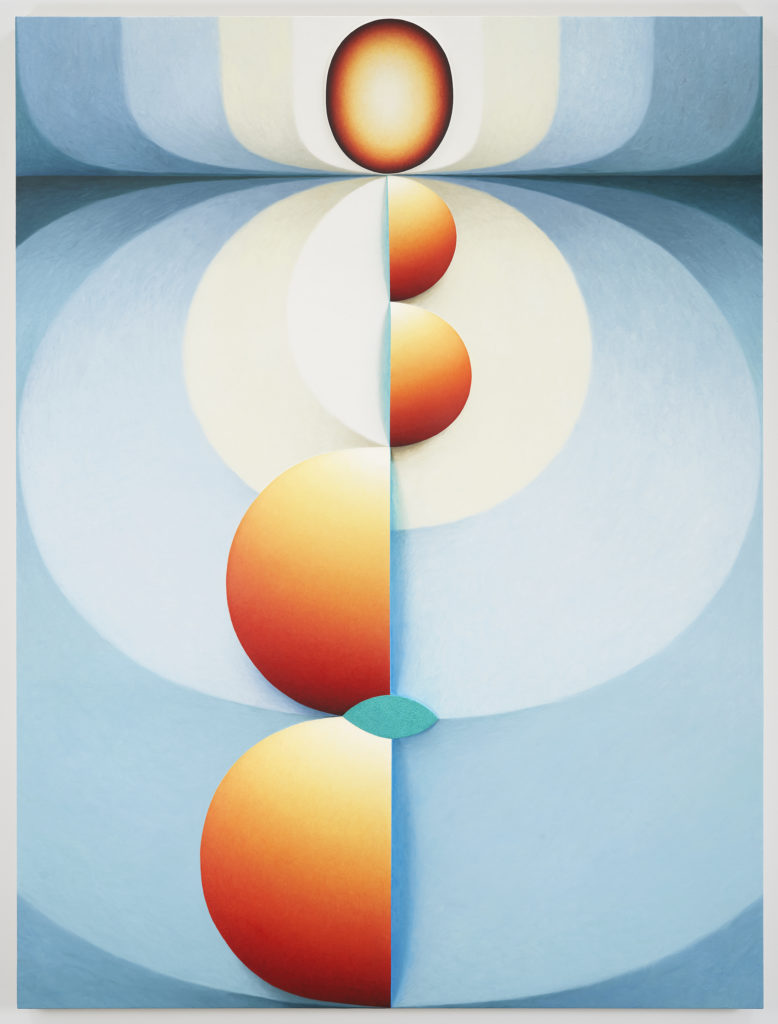
Loie Hollowell, Standing in Light, (2018). © Loie Hollowell, courtesy Pace Gallery
Smashing Estimates
It didn’t take long for the market to share that excitement. Her first Pace show opened at the gallery’s Palo Alto outpost in September 2017 and immediately sold out, with the prices now at $30,000 for a painting, or $45,000 for a triptych. In October, Pace brought 16 small pastel works priced at $6,500 to Frieze London. They sold them to 16 different collectors in less than an hour and added 40 other prospective buyers to a waiting list.
Her streak continued in 2018, when she showed at Pace’s gallery in Hong Kong, and then in London, at which point prices for her work had risen to $50,000. Anton Kern Gallery director Brigitte Mulholland secured a painting on loan for a group show at the start of that year, and by then the market was already in a full-blown tizzy over Hollowell. A new painting donated by the artist to benefit the Global Wildlife Fund was offered as the highly visible first lot in Christie’s Postwar to Present Sale in September. Estimated to sell for $20,000 to $30,000, it went for $110,000.
And this past March, the painting HUNG (UP) (2016) sold at Sotheby’s Contemporary Curated auction, consigned by a collector who bought it at the Feuer Mesler show for $15,000. It was estimated to fetch $50,000 to $70,000. Instead, bidding spiraled up until the cost, with fees, was $200,000.
Asked about that result, and whether she had expected the work to more than quintuple its low estimate, Charlotte van Dercook, the head of the sale, said that such things happen when there are so few works coming to market and the artist takes three months to make each painting. “There is a lot of demand for the work—when that happens, coupled with an artist who’s not really producing a lot of work, that doesn’t surprise me,” van Dercook said.
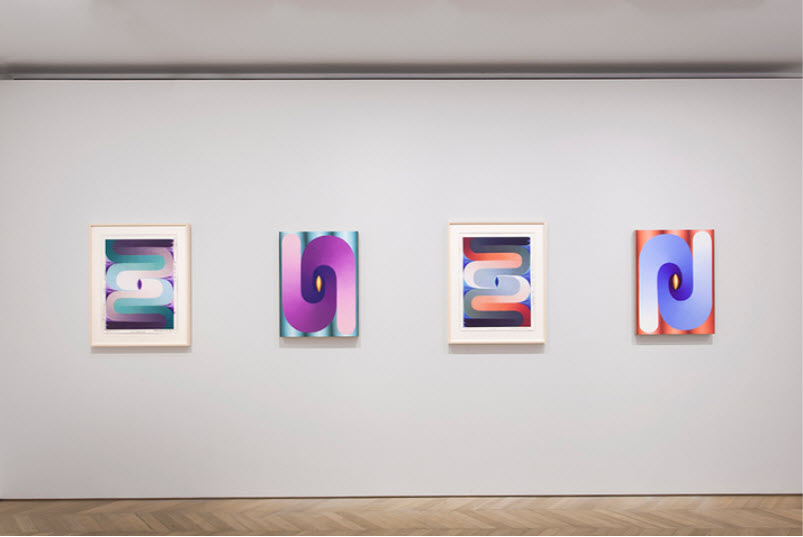
“Loie Hollowell: Switchback” installation view. Courtesy of Pace gallery.
How High Can It Go?
Arne Glimcher, the founder of Pace, is aware that the inflation rate for the youngest artist in his legendary stable is getting a bit out of hand. Speaking about Hollowell in a talk last week at the 92nd Street Y, he said that you “introduce an artist at the lowest price you possibly can,” but that with Hollowell the numbers were “growing like crazy.”
More than one advisor indicated that the elder Glimcher was among the buyers of the nine works in her new Pace show, while another said that one was acquired by a scrupulously private Chinese collector who is “spending a shit ton on art right now and getting access to things because of it.” There’s every indication that more work will surface on the secondary market—simply because, as one advisor put it, “if you buy something for 7 [thousand] and all of a sudden its worth 150 [thousand], it’s hard to resist selling it, or at least putting feelers out there.”
A new auction record would invariably push those prices up even more, especially given the growing demand for fresh work by exciting new female artists. While Hollowell’s approach was once unfashionable, all of a sudden the mystic-looking work of women such as Hilma af Klint and Agnes Pelton were being fêted with blockbuster museum shows.
The buzz also “mirrors a lot of market demand for women artists in the highest echelons of the art market, artists like Cecily Brown, Njideka Akunyili Crosby, Joan Mitchell, and one of her most salient references, Georgia O’Keeffe,” van Dercook said. “Those artists keep going higher and higher and that causes galleries and other collectors to look at other artists who are pulling from a similar visual vocabulary.”
So how high could her prices go? “It could go to $1 million,” Mesler said. “Should it? Probably not.”
Auction results aside, Hollowell herself is fairly unconcerned about the market, saying that she joined a large gallery like Pace so a crew of competent dealers can deal with the financial machinations and leave the art-making to her. “That’s why as an artist like me, who has no knowledge of the market, I work with Pace,” she said.
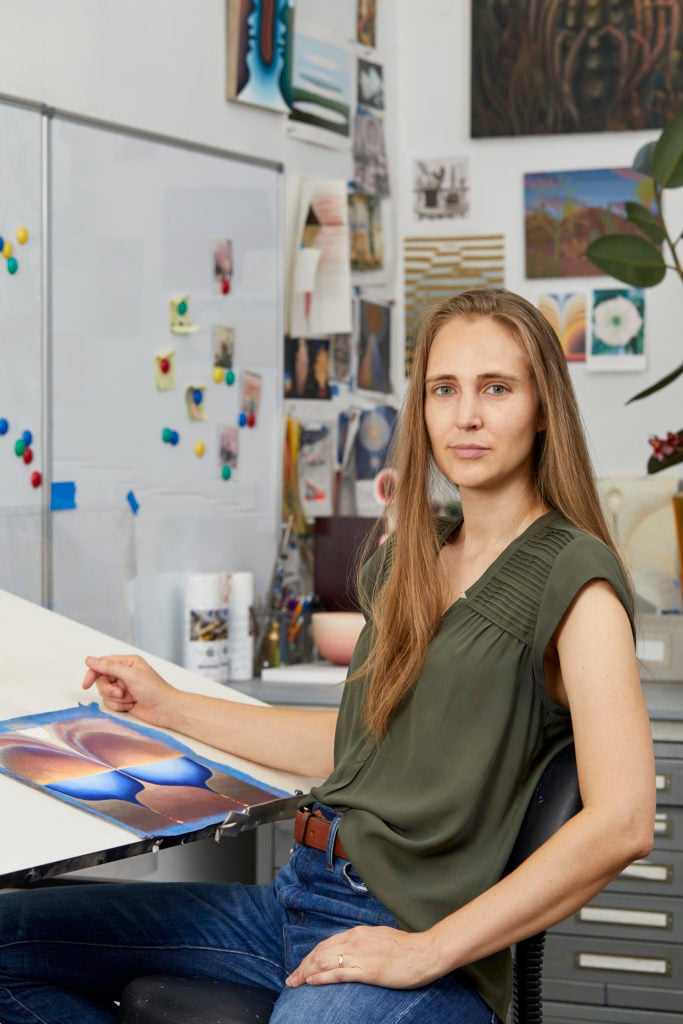
Loie Hollowell in the studio. © Loie Hollowell, courtesy Pace Gallery. Photo: Melissa Goodwin
And perhaps it’s healthy to be able to put things into perspective. When I saw Hollowell two days after my tour of the show, it was at the VIP party for the new gallery, which promised not the same old canapés but “culinary experiences” and a surprise performance that turned out to be by no lesser rock eminences than the Who, present due to a large charitable donation from the gallery.
They played four songs, and after “Pinball Wizard,” frontman Roger Daltrey thanked Marc Glimcher, who then started hopping up and down with a childlike glee, basking in whoops and pats on the back. Collectors J. Tomilson Hill, Len Riggio, and Dasha Zhukova; Met director Max Hollein and LACMA director Michael Govan; tennis star Maria Sharapova; and artists including Julian Schnabel and Henry Taylor all slinked through a big throng on the top floor. Women in pearls snagged tiny hot dogs and sauced them liberally with truffle aioli from Pace-branded squeeze bottles. It was the kind of blowout that we’ll think back upon with awe in the midst of the next recession.
When I saw her, Hollowell was trying to find the few friends she had put on the list for the bash, and as the Who ripped into “The Kids Are Alright,” I thought about something she had told me earlier that week. After talking about how high her prices had climbed, she pulled back for a second and put her $100,000 works in the context of Pace as a whole—in the context of the roof garden we were standing in, on top of an $80 million, museum-sized commercial enterprise that’s set to kick off a new golden age of behemoth mega-galleries in Chelsea.
“Compared to the other price points in the gallery right now,” Hollowell said, “mine would definitely be the most affordable.”
